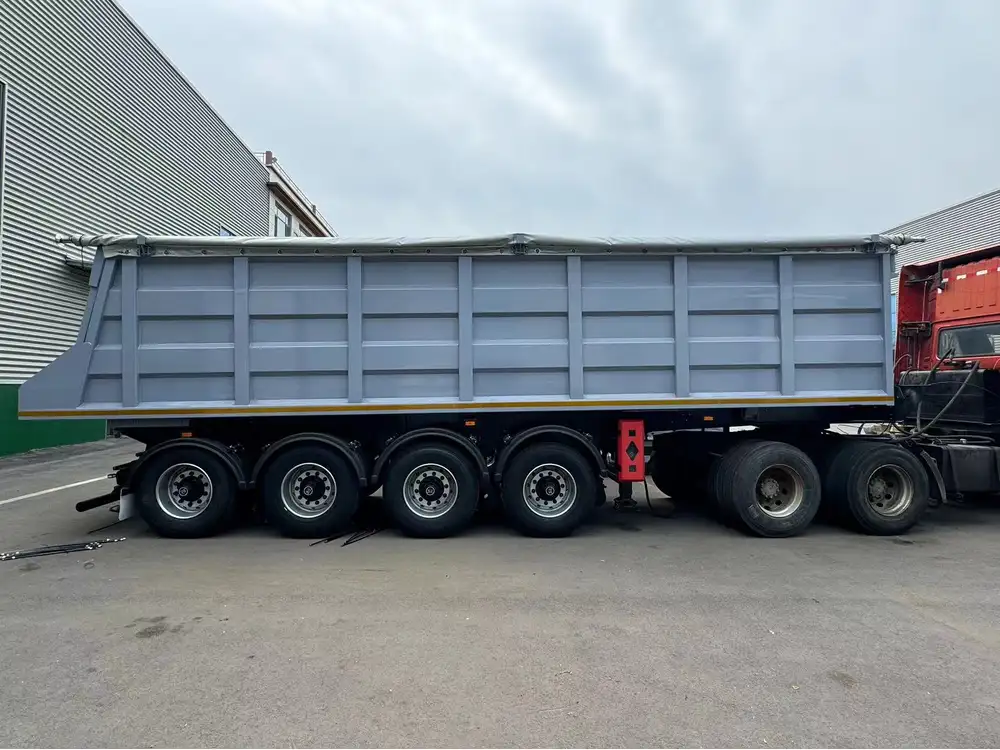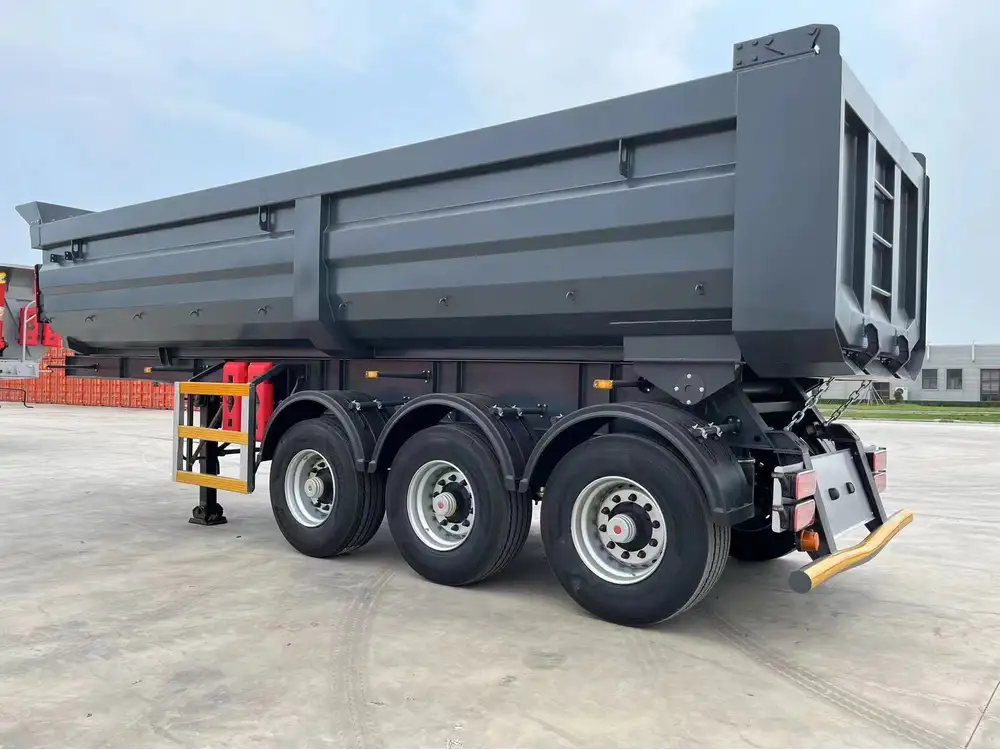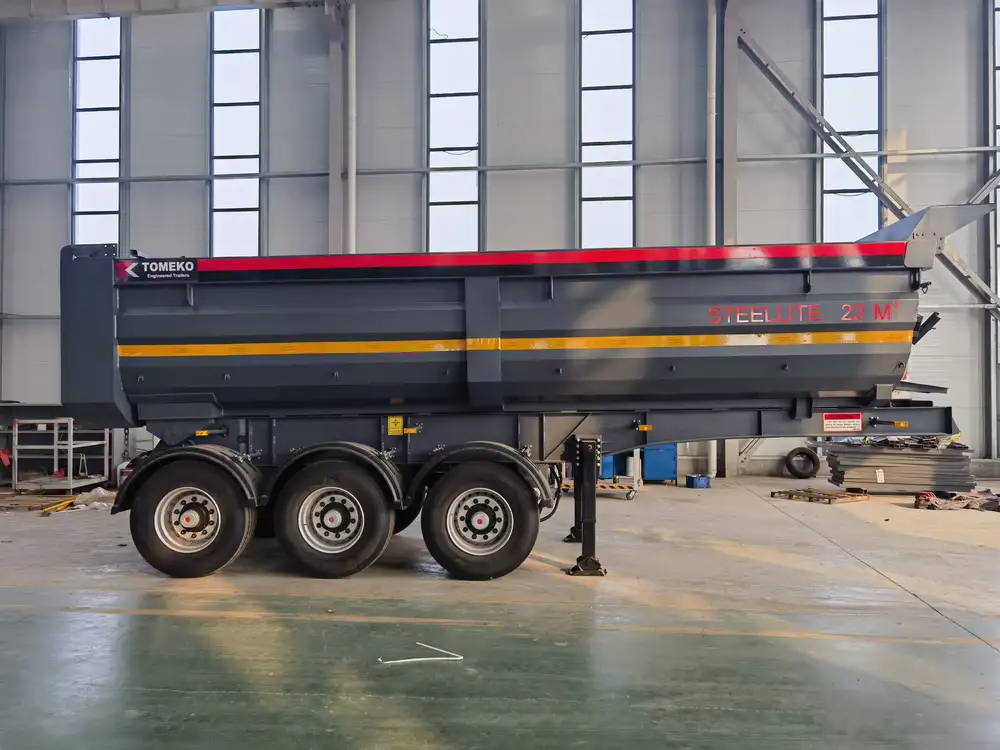As industries grow and transport logistics evolve, the conversation around the classification of various types of vehicles inevitably becomes more intricate. Among these, semi trailers hold a unique position. This article explores the multifaceted question of whether a semi trailer is classified as a vehicle, delving into legal definitions, technical specifics, and operational contexts.
Defining Key Terms: Semi Trailers Versus Vehicles
To address the core question, it’s vital first to dissect the terminology involved.
Semi Trailers
A semi trailer is a type of trailer that is designed to be towed by a truck or tractor unit. Unlike traditional trailers, semi trailers rely on the truck’s chassis for support, having one end attached to the truck while the other end rests on the ground. They are essential for transporting goods in logistics, construction, and agriculture.

Vehicles
Legally speaking, a vehicle is generally defined as a machine, often motorized, capable of transporting people or goods. This includes cars, trucks, motorcycles, buses, and various types of trailers.
| Term | Description |
|---|---|
| Semi Trailer | A non-motorized vehicle designed to be towed, not capable of independent movement. |
| Vehicle | A broader term that can refer to any means used for transport, generally equipped with wheels and a motor. |
Semi Trailers: The Legal Perspective
From a legal standpoint, the classification of semi trailers as vehicles varies significantly by jurisdiction.
United States
In the U.S., highway and traffic codes typically categorize semi trailers differently from motor vehicles. For instance, the Federal Highway Administration defines a trailer as “a vehicle designed to be towed by a motor vehicle.” This definition inherently excludes autonomy, reinforcing that semi trailers function in conjunction with a powered vehicle.

European Union
Conversely, the European Union employs a different approach. EU regulations classify semi trailers as part of the “combined vehicle,” which considers the entire assembly of tractor and trailer as a single operational unit for regulatory purposes.
| Region | Definition |
|---|---|
| United States | Separated as a non-motorized unit; reliant on trucks for movement. |
| European Union | Viewed as part of a larger combination vehicle, emphasizing operational cohesion. |
Operational Context: How Semi Trailers Function
While a semi trailer is not self-propelled, it plays an integral role in the transportation movement. Understanding its operational context can shed light on its classification.
Types of Semi Trailers
Semi trailers come in various shapes and forms, each designed to meet different hauling needs:
Flatbed Semi Trailers
- Used for transporting heavy equipment, lumber, and construction materials.
Reefer Semi Trailers
- Designed to carry temperature-sensitive goods like food and pharmaceuticals.
Tanker Semi Trailers
- Ideal for transporting liquids, including fuel and chemicals.
Curtain Side Semi Trailers
- Versatile design enabling easy loading and unloading of goods.

Importance in Supply Chain
The semi trailer’s design minimizes weight while maximizing capacity, significantly impacting logistic efficiency. This critical role leads transportation and logistics companies to consider it as a vital asset, despite its dependency on a towing vehicle.
| Type of Semi Trailer | Use Case | Cargo Type |
|---|---|---|
| Flatbed | Construction sites | Heavy machinery, building supplies |
| Reefer | Foodservice and healthcare | Perishable goods like fruits and medicine |
| Tanker | Fuel distribution | Gasoline, chemicals |
| Curtain Side | Versatile operations | Various consumer goods |
The Technical Specifications of Semi Trailers
Examining the technical aspects of semi trailers deepens our understanding of their classification as non-vehicles.
Structure and Design
- Chassis: The frame supports the trailer and cargo.
- Axles: Generally equipped with two to four axles, facilitating weight distribution.
- Kingpin: A pivotal feature connecting the trailer to the tractor unit, allowing for a high degree of maneuverability.

Weight Classification
In terms of weight regulation, federal guidelines stipulate specific maximum weight limits for combinations of towing vehicles and trailers. The Weight Limit law in the U.S. federal code indicates the importance of ensuring that both motor and semi trailers comply with safe road practices.
Licensing Requirements
In many jurisdictions, operators must possess specific licensing to tow a semi trailer. For instance, obtaining a Commercial Driver’s License (CDL) is mandatory in the U.S. for those operating vehicles that possess a combined weight over 26,000 pounds.
| Specification | Details |
|---|---|
| Chassis | Supports cargo; can withstand heavy loads |
| Axles | Weight distribution for improved stability |
| Kingpin | Connects to the tractor; allows for sharp turns |
| Licensing | CDL required for heavy combinations |
Semi Trailers and Road Safety: Legal Perspectives
Given the complex interaction between semi trailers and motor vehicles, addressing road safety regulations is paramount.

Insurance and Liability
Insurance policies related to semi trailers often view them in conjunction with the towing vehicle. This combined liability aspect signifies that while the semi trailer itself may not be considered a vehicle, it remains an important element in risk assessment.
Safety Regulations
The National Highway Traffic Safety Administration (NHTSA) strictly regulates semi trailers’ safety standards in the U.S., ensuring they meet stringent criteria since they contribute significantly to road and cargo safety.
| Safety Aspect | Description |
|---|---|
| Insurance Coverage | Often bundled with the towing vehicle’s policy. |
| Regulation Compliance | Must adhere to federal safety standards and inspections. |
The Future of Semi Trailers in an Evolving Transport Landscape
As technology progresses and the logistics landscape changes, semi trailers are evolving. The emergence of electric trucks and automation poses new questions about classification.

Autonomous Towing Vehicles
One intriguing development is the advancement of autonomous towing vehicles. If semi trailers eventually coexist with autonomous vehicles, how will new regulatory frameworks classify them? Will the semi trailer’s role shift, transcending traditional definitions?
Environmental Concerns
With sustainability becoming a dominant focus in the transport industry, semi trailers are also adapting. Innovations focused on reducing weight, enhancing fuel efficiency, and developing alternative materials position semi trailers as vital components in fostering eco-friendly logistics solutions.
| Trend | Implication |
|---|---|
| Autonomous Vehicles | Potentially challenges existing definitions. |
| Sustainability Initiatives | Possible re-evaluation of semi trailer designs. |
Conclusion: Dissecting the Classification of Semi Trailers
In summary, the question of whether a semi trailer is a vehicle cannot be answered straightforwardly; it depends deeply on context—legal, operational, and technical. A semi trailer, although classified as non-motorized, plays an indispensable role within the transportation ecosystem, making it an invaluable asset instead of merely a passive entity.

Key Takeaways
- Legal Classification: Varies significantly across jurisdictions, presenting unique standards.
- Operational Role: Vital for efficient logistics and diverse transport applications.
- Future Evolution: Adaptations in response to technological and environmental shifts.
Understanding these dimensions affirms the notion that while a semi trailer may not fit the traditional definition of a vehicle, its significance in moving goods remains undeniable. As logistics continues to evolve, so will our understanding and classification of these essential transport components.



